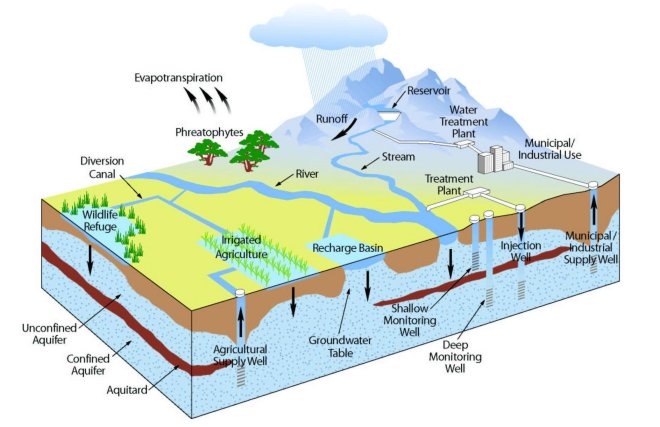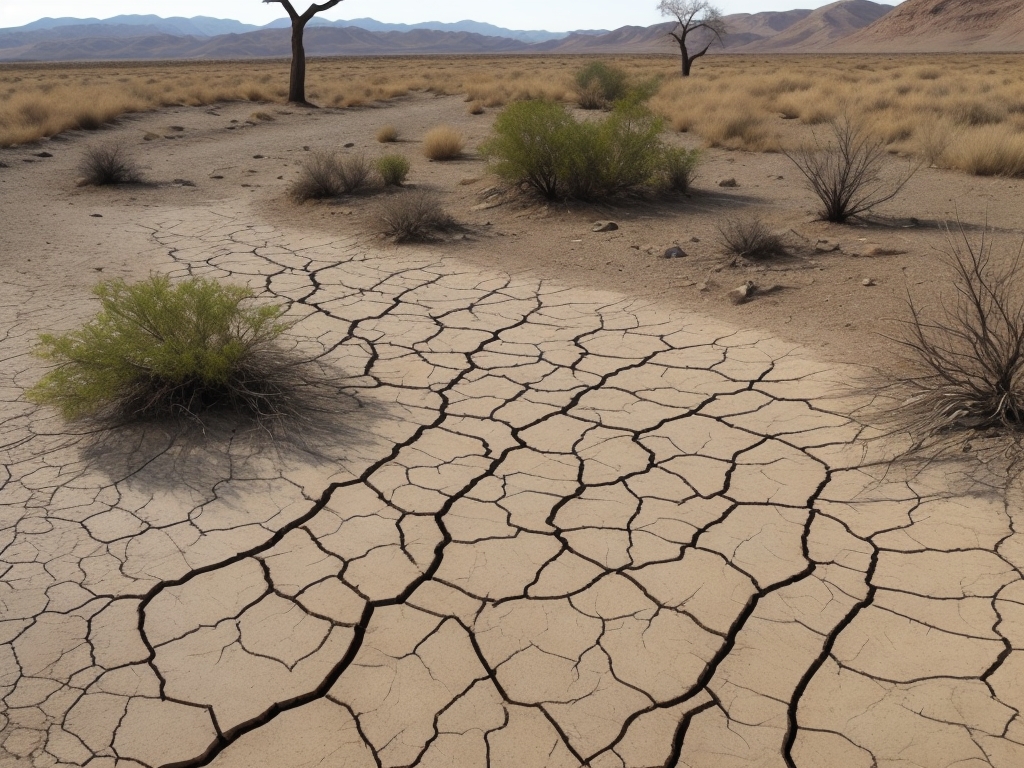Beneath the surface of our terrestrial realm lies a hidden world, concealed from our immediate senses. This subterranean domain, known as groundwater, holds great significance in the intricate web of Earth’s hydrological systems.
As we embark on an enlightening journey into this enigmatic realm, we will unravel the intricacies of groundwater sources and delve into the challenges posed by contamination.
Moreover, we shall explore strategies for managing and safeguarding these invaluable resources, while also unearthing innovative solutions to address their preservation.
Through this exploration, we shall gain profound insights into the wondrous world that lies beneath our very feet.
Key Takeaways
- Groundwater is a vital source of drinking water and supports ecosystems, making its conservation crucial for future generations.
- Groundwater recharge occurs through precipitation, snowmelt, and surface water bodies, but excessive extraction without adequate recharge can lead to aquifer depletion.
- Contaminants can enter groundwater through industrial chemicals, agricultural runoff, and waste disposal, but remediation techniques exist to remove or reduce pollutants from the subsurface environment.
- Managing and protecting groundwater resources requires a comprehensive understanding of aquifer recharge rates, water demand, land use practices, and climate variability, as well as the implementation of sustainable practices and community engagement.
The Importance of Groundwater
The importance of groundwater lies in its role as a vital source of drinking water, irrigation for agriculture, and support for ecosystems. Groundwater conservation is crucial to ensure the availability of this precious resource for future generations.
Sustainable management practices are necessary to maintain groundwater levels and quality. Groundwater sustainability involves understanding the hydrological processes that govern groundwater recharge and discharge rates, as well as the dynamics of aquifer systems. Monitoring networks and modeling tools are used to assess groundwater resources and develop effective management strategies.
Implementing measures such as water-use efficiency, land-use planning, artificial recharge, and managed aquifer recharge can help conserve groundwater resources. Additionally, public awareness campaigns and educational initiatives play a significant role in promoting responsible water use practices and fostering a sense of belonging to collective efforts towards groundwater conservation.
Understanding Groundwater Sources
An understanding of the sources of groundwater is crucial in comprehending the complexities of subsurface hydrology. Groundwater recharge refers to the process by which water infiltrates into the ground and replenishes underground aquifers. It occurs through various mechanisms such as precipitation, snowmelt, and surface water bodies that percolate down into the soil.
Aquifer depletion, on the other hand, is a significant concern resulting from excessive extraction of groundwater without adequate recharge. Over-pumping can lead to long-term declines in groundwater levels, reduced storage capacity within aquifers, and even land subsidence.
Understanding these sources helps us evaluate sustainable water management practices and develop strategies to mitigate aquifer depletion. By identifying areas with high potential for groundwater recharge and implementing effective conservation measures, we can ensure a reliable supply of this vital resource while minimizing adverse impacts on ecosystems and human activities reliant on groundwater.
Exploring Groundwater Contamination
Examining the sources and levels of contamination in subsurface water is essential for assessing the potential risks associated with groundwater quality. Investigating pollution in groundwater involves identifying and analyzing various contaminants that can enter the subsurface environment, such as industrial chemicals, agricultural runoff, and waste disposal. Understanding the pathways through which these contaminants migrate allows for a more comprehensive evaluation of their impact on groundwater resources.
Remediation techniques play a crucial role in addressing contaminated groundwater. These techniques aim to remove or reduce pollutants from the subsurface environment through methods like pump-and-treat systems, in situ bioremediation, and chemical oxidation. The selection of an appropriate remediation technique depends on factors such as contaminant type, site geology, hydrogeological conditions, and regulatory requirements.
Ongoing research focuses on developing innovative approaches to effectively mitigate contamination and restore groundwater quality.
Managing and Protecting Groundwater Resources
Managing and protecting groundwater resources requires a comprehensive understanding of factors such as aquifer recharge rates, water demand, land use practices, and climate variability. Sustainable practices and conservation methods are essential for ensuring the long-term availability and quality of groundwater.
To achieve this goal, several strategies can be implemented:
Implementing water-efficient technologies:
- This includes measures like low-flow fixtures, drip irrigation systems, and rainwater harvesting techniques that minimize water wastage.
- Using advanced metering devices to monitor water usage and identify areas for improvement.
- Promoting responsible land use practices:
- Encouraging proper zoning regulations to prevent contamination from industrial activities or improper waste disposal.
- Implementing best management practices in agriculture to reduce excessive fertilizer or pesticide use.
Uncovering Groundwater Solutions
Uncovering solutions to address the challenges of groundwater management requires a multidisciplinary approach that integrates scientific research, policy development, and community engagement. To ensure the long-term sustainability of groundwater resources, it is crucial to adopt sustainable practices and involve local communities in decision-making processes.
Sustainable practices encompass various strategies such as water conservation, recharge methods, and efficient irrigation techniques. By implementing these practices, we can reduce the strain on groundwater sources and promote their replenishment. Community involvement plays a vital role in achieving successful groundwater management.
Engaging with local communities fosters a sense of ownership and responsibility for resource protection. It also allows for the exchange of valuable traditional knowledge about groundwater use and management. The table below highlights some potential solutions that combine sustainable practices with community involvement.
| Solution | Description |
|---|---|
| Rainwater harvesting | Collecting rainwater from rooftops or other surfaces for future use |
| Groundwater education programs | Providing information and training to raise awareness about the importance of groundwater |
| Participatory monitoring | Involving community members in collecting data on groundwater levels and quality |
| Stakeholder collaboration | Collaborating with local authorities, businesses, and NGOs to develop effective management plans |
Frequently Asked Questions
How Does Groundwater Contamination Affect Human Health?
Groundwater contamination poses significant health risks to humans. Contaminants such as heavy metals, organic chemicals, and pathogens can enter the groundwater supply and subsequently affect human health through consumption or direct contact.
Are There Any Natural Sources of Groundwater Contamination?
The presence of natural sources of groundwater contamination can be attributed to various chemical reactions that occur within the surrounding environment. These reactions contribute to the release of contaminants into groundwater, posing potential risks to human health and ecosystems.
What Are the Main Causes of Groundwater Depletion?
The main causes of groundwater depletion are over extraction and drought. Over extraction refers to the excessive pumping of groundwater for various purposes, while drought reduces the recharge of groundwater due to lack of precipitation.
How Does Climate Change Impact Groundwater Availability?
Climate change effects on groundwater availability can be understood by examining aquifer vulnerability. Changes in temperature and precipitation patterns alter recharge rates, leading to decreased water levels in aquifers. This impacts water supply and sustainability.
What Are the Long-Term Effects of Over-Pumping Groundwater?
The long-term effects of over-pumping groundwater have significant implications for sustainable water resources and groundwater management. These effects include land subsidence, saltwater intrusion, reduced streamflow, and depletion of aquifers, which can lead to water scarcity and ecological disruptions.
Conclusion
In conclusion, the intricate and vital realm of groundwater remains a hidden treasure beneath our very feet. Its significance cannot be understated, serving as a fundamental resource for countless ecosystems and human activities alike. By delving into the depths of groundwater sources, we gain a profound understanding of its origins and behavior.
However, we must also confront the disheartening reality of contamination that threatens this invaluable asset. Through diligent management and unwavering protection, we can unveil innovative solutions to safeguard this subterranean world for generations to come.

